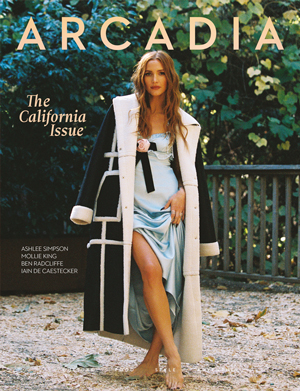A healthy smile starts with the simple act of brushing your teeth. But are you brushing them the right way? Everybody brushes regularly, but some still suffer from cavities, gum issues, or halitosis. It’s not really how much you brush but how you do it that makes the difference. Small changes in what you do daily can lead to drastic changes in your oral health.
From choosing the right toothbrush to maximizing brush strokes, adapting the right habits can be the key to having a healthier, cleaner, fresher-smelling mouth with a brighter, happier smile to enjoy in the coming years.
On this blog, we’ll explore 8 simple brushing habits that will take your dental practice to the next level without spending top dollar on high-end products or undergoing painful procedures. Are you ready to learn more? Let’s dive in.
Brush for a Full Two Minutes Every Time
While this may seem too obvious, most people do not brush long enough. The American Dental Association recommends that you brush for two or more minutes twice a day. Research shows that the typical person will brush for maybe about 45 seconds, and that’s all for the day. Rushing when brushing will leave plaque, food particles, and bacteria behind, which can cause tooth decay and gum disease.
To ensure that you’re brushing for the stipulated time, you can consider using a timer, singing along to a favorite two-minute tune until you are done, or purchasing an electric toothbrush with a timer. Brushing for up to two minutes twice a day will give you enough time to clean each tooth surface effectively, which leads to healthier gums and breath.
Choose the Right Toothbrush for Your Needs
You’ve gone to the store and noted that toothbrushes are not equal. That’s true. A proper toothbrush can make a big difference in your oral health. Soft-bristled toothbrushes are generally the best option because they clean between teeth and underneath the gum line well without wearing down the enamel or irritating the gums.
Hard bristles, while being more aggressive, can wear down enamel over time and lead to sensitivity or gums pulling back. No matter what you use, manual or electric toothbrushes, the toothbrush head must be small enough to reach all areas of your mouth. If you wear braces or dental appliances, you may be required to use special brushes, which your dentist might recommend. Ensure to replace your toothbrush or brush head after every 3–4 months or sooner if the bristles are worn out.
Upgrade Your Toothpaste for Better Results
Not only does toothpaste leave your mouth feeling clean, but it is also relied upon by your teeth. While old favorites like fluoride are still welcomed as a preventative against cavities, there’s a new crop of choices.
Nano-hydroxyapatite, a toothpaste that mimics the mineral structure of your enamel, is now trending for being able to repair small cracks in the enamel and relieve sensitivity. As highlighted by the team behind BetterBiom, switching to Nano-hydroxyapatite toothpaste will strengthen your enamel and promote a cleaner, smoother surface that is less susceptible to plaque buildup. This product is beneficial for individuals suffering from sensitivity and early enamel loss.
Switching to toothpaste with advanced remineralizing agents can make your regular brushing routine an investment in oral health that will last for the longest time possible.
Master the Proper Brushing Technique
As with performing any other task, brushing your teeth is not a joke or something not useful. You need to use the right technique. The majority of people use horizontal, back-and-forth strokes, which are too hard on their teeth. You can put your toothbrush at an angle of 45 degrees to your gums and use gentle, circular strokes to brush your teeth. This will brush away plaque along the gum line without irritating your teeth.
Be sure to brush all surfaces of your teeth, including the outer, inner, and chewing surfaces. You can spend about 30 seconds on each quadrant of your mouth to achieve even, clean teeth. Don’t press your toothbrush too hard in an attempt to achieve squeaky clean teeth. This will wear down your enamel and may damage your gum tissue. Gentle, thorough brushing will be safer and more effective on your teeth and gums.
Don’t Forget to Brush at Night
Most individuals brush in the morning only, prior to consuming breakfast, without remembering that brushing at night is much more important. Your mouth picks up food particles, sugars, and bacteria all day long, which will combine to form plaque. If you do not brush at night, those items will remain on your teeth throughout the entire night, leaving you much more susceptible to tooth decay and gum disease. Saliva production is also minimal when sleeping, making your mouth more prone to bacteria.
Brushing in the evening before you sleep will help to remove toxic plaque buildup and will protect your teeth when your body is at rest and when healing. You can brush daily after the evening meal or night-time snack and then floss at other times to remove loose food particles that are between teeth.
Don’t Forget to Brush Your Tongue
Just like your gums and teeth, your tongue harbors bacteria. Failing to brush it often will lead to bad breath and can contribute to plaque build-up in your mouth. Brushing your tongue—or using a tongue scraper—will remove odor-causing bacteria and leave your mouth feeling very clean.
The rear of the tongue is particularly a bacterial breeding ground. You can use soft strokes, starting from the back and working towards the front. You will need to avoid pressing too hard or activating your gag reflex. Incorporating this brief step into your brushing routine will take less than 30 seconds but can greatly enhance your breath and oral health. A clean tongue equals a clean mouth.
Rinse Your Toothbrush and Store It Properly
Proper toothbrush maintenance is often overlooked as part of an overall healthy oral routine. To rinse your toothbrush, swish it under running water to remove any residual toothpaste, food particles, or bacteria. Please do not put it into a sealed cup or cover it immediately, as this may create a humid space where bacteria can thrive.
Rather, lay it on its end and let it air dry in an open place. If you have multiple brushes in the same holder, ensure you don’t let them touch each other to avoid cross-contaminating yourself. Also, don’t share toothbrushes with others. After illness, ensure that it is replaced to prevent reinfection. Drying off your toothbrush before replacing it will ensure that you’re not introducing excess bacteria into your mouth every time you are done brushing.
Make Brushing Part of a Complete Oral Care Routine
Brushing alone will not guarantee optimal oral health, and that’s for sure. It should be one part of a comprehensive routine that includes flossing, mouthwash rinsing, and a visit to the dentist. Flossing removes plaque and food from between teeth that toothbrush bristles cannot reach. Mouthwash can destroy bacteria, eliminate halitosis, and inhibit plaque formation.
Scheduling regular dental visits (at least every six months) will allow for early detection of issues and keep your smile in top condition. Brushing is more like the foundation of your oral health—it shouldn’t be the only thing. If you combine good brushing with other good habits, you can have healthier teeth, gums, and a healthier smile.
Good oral health doesn’t have to be something complicated—it all starts with some simple, everyday habits. One of the biggest habits is brushing your teeth correctly. Simple changes like brushing for a whole two minutes, brushing properly, using superior toothpaste, and not forgetting your tongue can make a huge difference. The best part? These routines don’t cost much time or money, but they can result in healthier teeth, healthier gums, and overall better health. Begin incorporating these eight routines into your life to give your mouth the attention it’s been craving for.







